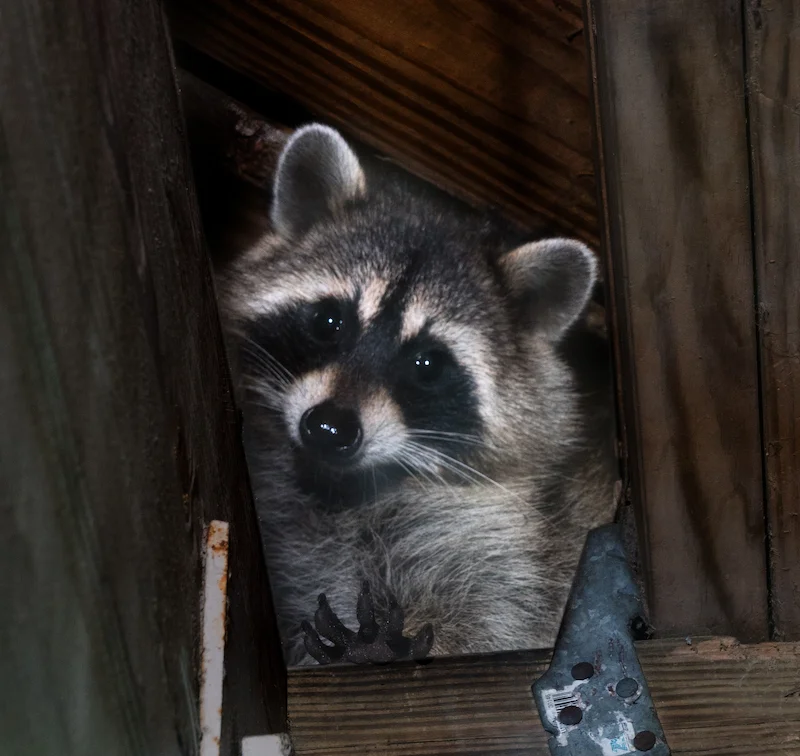- Noises coming from your walls, attic, vents, chimney, or roof may indicate the presence of pests or wildlife.
- These sounds can occur at any time, day or night.
- By considering the time, type, and location of the noise, you can often identify the specific animal or pest responsible.
Ever hear something go bump in the night? Or scritch, scratch? Unexplained noises can certainly be unnerving. In the ensuing moments, you might ask, “What’s that sound?” or “Did you hear a noise?”
It’s probably nothing – or maybe it’s just the house settling, or it could be your imagination. But it could also be pests or wildlife in your home.
To help you explain those unexplained noises, we’ve put together this guide. Below you’ll find some of the most common sounds you might hear in your house, and the possible pest, rodent, or wildlife culprits that may be causing them.
What Type of Noise Did You Hear?
Let’s break it down by what type of noise it was, and just as importantly, where you heard it.
Common sounds in your walls
Walls are a common place to find pests and wildlife, from small insects to larger animals like rodents or even raccoons. Large creatures can become trapped or struggle to move within these confined spaces.
Gnawing or grinding in walls
Rodents have teeth that constantly grow, forcing them to chew on hard surfaces like wood, plastic, and even electrical wiring to file them down. This noise is often steady and can be heard at night or in the morning.
Possibilities:
- Rats and mice: If sounds are at night
- Squirrels: Most active during the morning
Scratches in walls
What kind of scratching do you hear? Is it staying in one place or moving?
Possibilities:
- Rats and mice: heard primarily at night. The most common cause.
- Squirrels: Frantic scrambling and running sounds, heard only during the day.
- Raccoons: Loud, heavy, and slow-moving scratching or thumping, heard at night.
- Carpenter Ants: Faint, rustling, or ticking noises coming from within the wood structure itself.
A buzzing or humming in the walls
This almost always indicates a nest of stinging insects. The sound is created by the vibration of thousands of wings within the hive or nest. It may become louder on warmer days when the colony is more active.
Possibilities:
Ticking or clicking inside walls
A very quiet, almost unnoticeable clicking or ticking sound coming from within wood structures can be a sign of a serious wood-destroying insect infestation.
Possibilities:
- Termites
- Carpenter ants
Heavy dragging sounds in the walls
A slow, heavy dragging or shuffling sound from the attic or crawlspace suggests a larger animal is on the move. Unlike the quick scampering of a squirrel, these animals are heavier and move more deliberately as they forage or move to and from their den.
Possibilities:
- Raccoon
Bumps on the roof
A sudden, sharp thud or repeated softer thumps can be a sign of animal activity directly overhead. Animals often use the roof as a pathway or a place to forage. Pay attention to the frequency and intensity of the sounds, as this can help identify the culprit.
Possibilities:
- Raccoons: Heavy walking or thumping sounds, heard at night. Their weight is a primary cause of loud rooftop noises.
- Squirrels: Quick scampering, running, or the sound of nuts being dropped/rolled, heard during the day.
- Tree Branches: A common non-pest cause is branches scraping or bumping against the roof, especially on windy days.
- Cats: Lighter, quicker footsteps than raccoons, often heard at night or dawn/dusk. Meows or purrs might also be audible if they are close to entry points.
Thuds in your attic / Crashes in the garage
Attics and garages are prime locations for larger animals seeking shelter, food, or a place to nest. The sounds here are often louder and more distinct due to less insulation and more open spaces. Animals might knock into stored items or structural elements.
Possibilities:
- Raccoons: The most likely nighttime culprit for knocking over tools, bins, or boxes. Their size and curiosity lead to significant disturbances.
- Rats: Capable of knocking smaller items off shelves as they scurry and climb, creating clattering noises at night.
- Opossums: Clumsy movements can easily cause them to bump into and knock over stored items while foraging at night.
- Birds: Frantic thrashing and crashing as a trapped bird panics and flies or jumps into objects trying to escape.
Rustling in vents or chimneys
Sounds of flapping, fluttering, or frantic rustling often point to a winged animal that is trapped. They may fly into an uncapped chimney or an open vent and be unable to get back out. This noise is often sporadic and sounds distressed.
Possibilities:
- Birds
No Matter What Type of Noise, You Can Call Us
No matter what’s causing your nighttime disturbance — from the faintest insect rustle to the loudest attic thud — we have the wildlife removal experience and tools to identify the source and provide a solution. And our wildlife exclusion team has the prevention expertise to make sure it won’t happen again.
So, stop guessing and give Xceptional Wildlife Removal a call. We’ll turn those bumps in the night back into peaceful silence.

